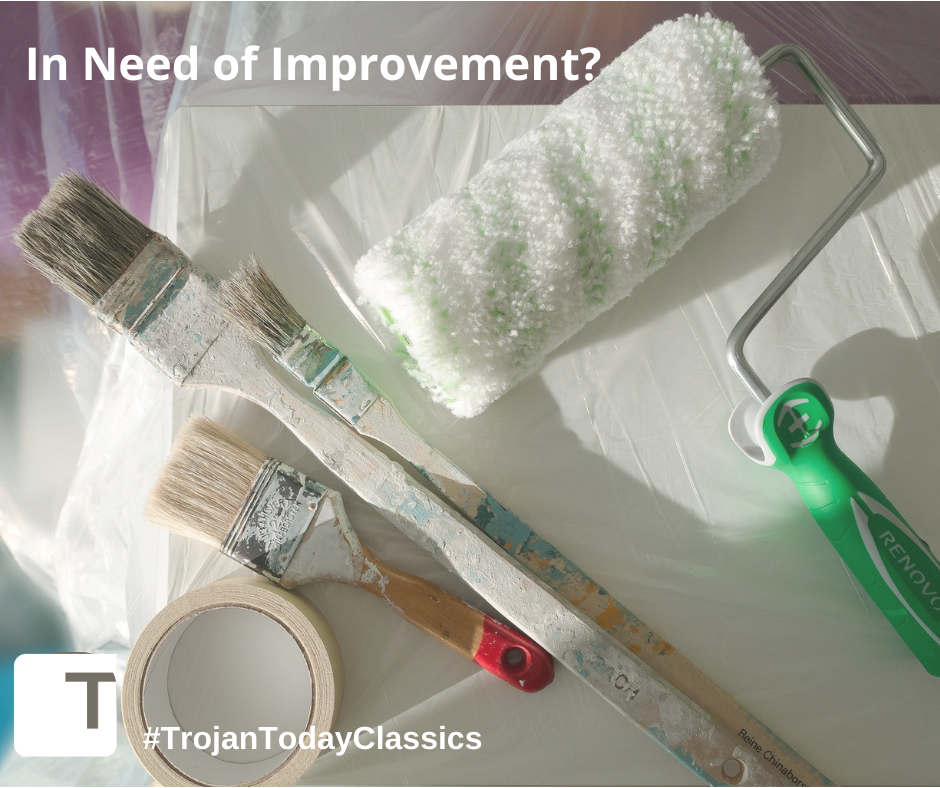Originally published June 2008 in Trojan Today, and January 2008 in CDS Review.
When a friend of mine bought her first home, her father gave her a valuable piece of advice. Rather than waiting until she was ready to sell the home to make necessary and/or desired improvements, he encouraged her to look around the house each year and to do all the things she would need to do for resale if she were going to put it on the market. In this way, she wouldn’t be hit with a lot of expense all at once and could spread it out over a number of years. More importantly, she’d be able to enjoy the fruit of her upkeep, rather than fixing the house up for new owners.
Though meant for my friend, this advice is great for business owners, as well. It’s sometimes easier to do updates and changes only periodically, but it makes more sense to do them regularly. Like my friend, you’ll be able to enjoy the benefit of regular office upkeep as well as spread your expenses over a number of years. Here’s how to apply this concept to your office.
Evaluate
Set aside a half hour to make a list of the things in your office that may need attention. Doing a walk-through will help you build your list. Here are the items you should consider:
- Physical appearance: Is the carpet worn? Would your walls benefit from a new coat of paint? Is the decor warm and inviting? Is it current?
- Equipment needs: Are there any equipment updates you should consider? Any old equipment you need to get rid of?
- Technology upgrades: Are you keeping up with technological changes? Are there new applications or software you need to consider purchasing?
- Training needs: Would you or your staff benefit from specialized training? What doesn’t staff know how to do that they need to know? Who’s the weakest link in the office, and would this person benefit from training?
Ask your staff
Set aside some time in your next staff meeting to get input from staff members in each of the above areas. Or, if you feel you’ll get more honest feedback, meet one-on-one with each staff member to seek out ideas and suggestions in each category listed above.
Finalize your list
Blend the items on your list with those offered by staff members in order to make a master list for your consideration.
Prioritize the necessary improvements. Working from your master list, rank the items in order of importance. The most important item should be listed first, on down the line.
Decide which items should be done this year. If you’re ambitious, you may be able to focus on each item you’ve listed. But some projects are big enough – and expensive enough – you might begin planning for them this year but not actually tackle them until some point in the future.
Assign accountability
Who’s going to tackle each of the items on your list? Assign what you can to staff members (they’ll appreciate the challenge!) and keep what you’re most interested in for yourself. Or, consider assigning mini-work teams within the office if you’d like to include everyone in some sort of improvement project.
Assign deadlines
When are these projects going to be completed? If there are many on your list, spread them out over the upcoming year rather than make them all due the first quarter. This will be less stressful for everyone in the office.
Enjoy!
Not only will improvements help protect your financial investment in your practice, they’ll be appreciated by staff and patients as well. You deserve to spend time in a current, pleasant environment – one that enables you to do your very best work.
Go back to Step #1
Improving your practice should be a never-ending task. If you keep up with necessary changes on a regular basis, they will be easier to afford and you’ll be able to enjoy the fruit of your work rather than waiting until it’s time to sell the practice and invest in updates for the benefit of the next owner.

